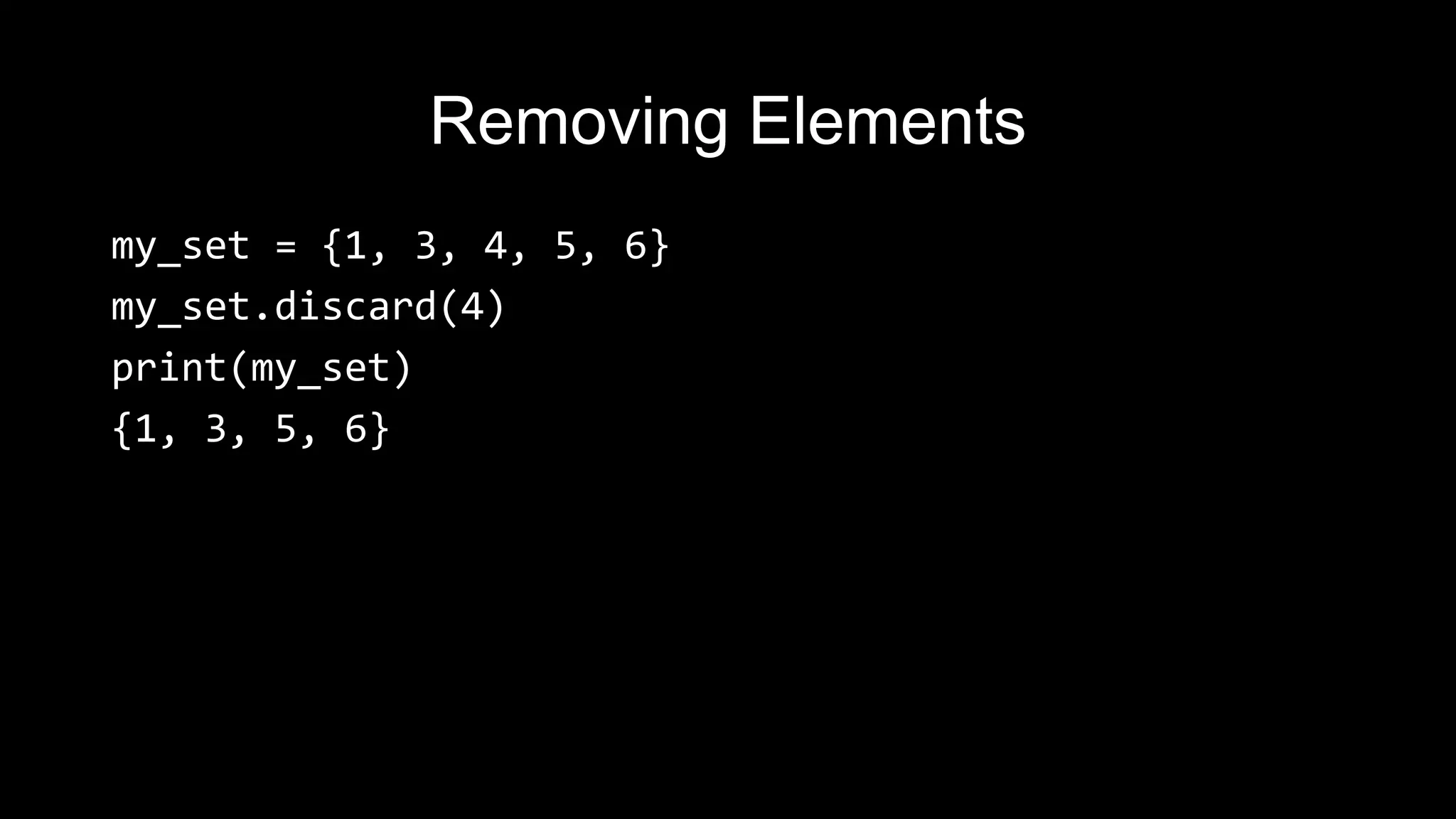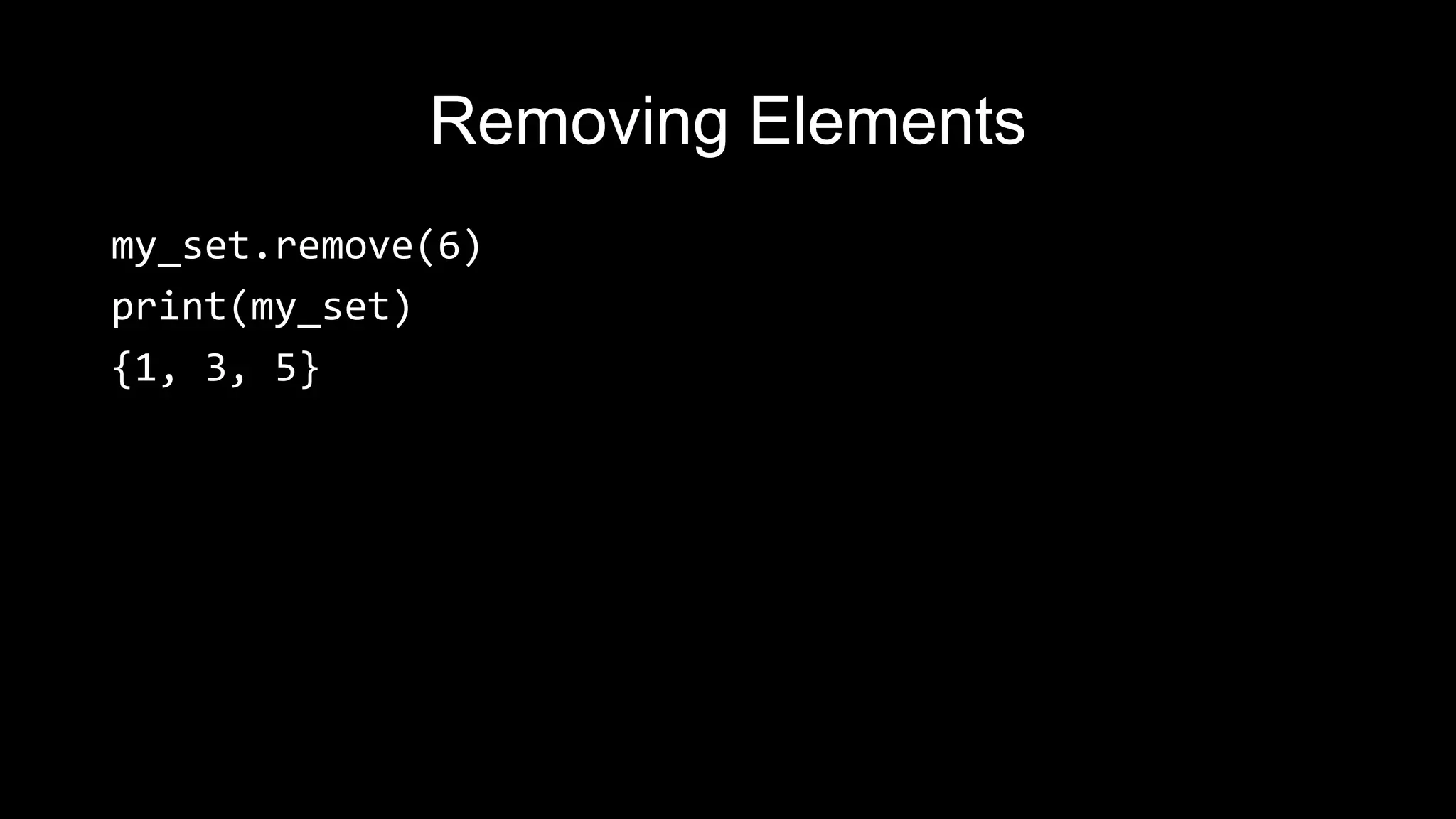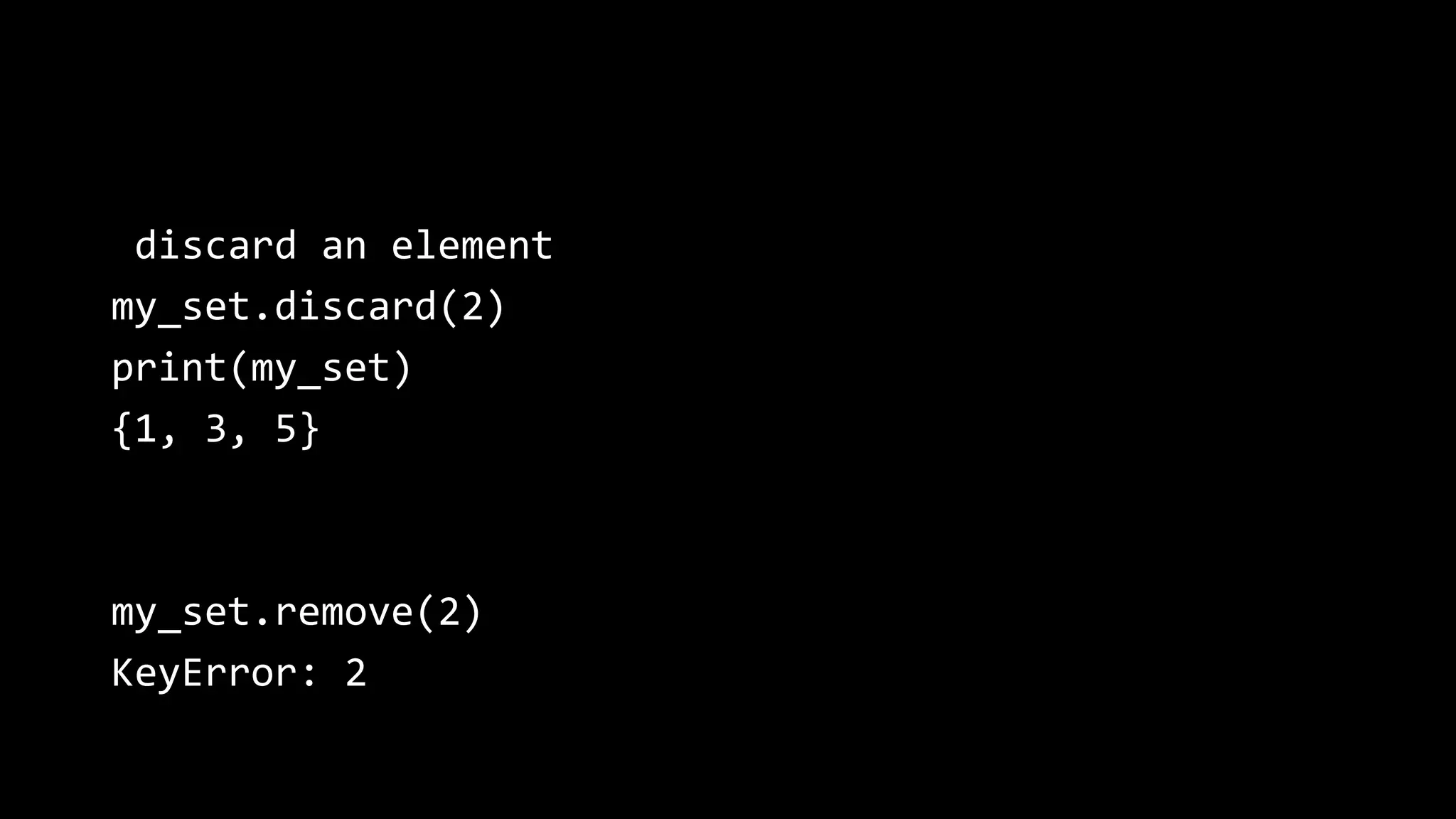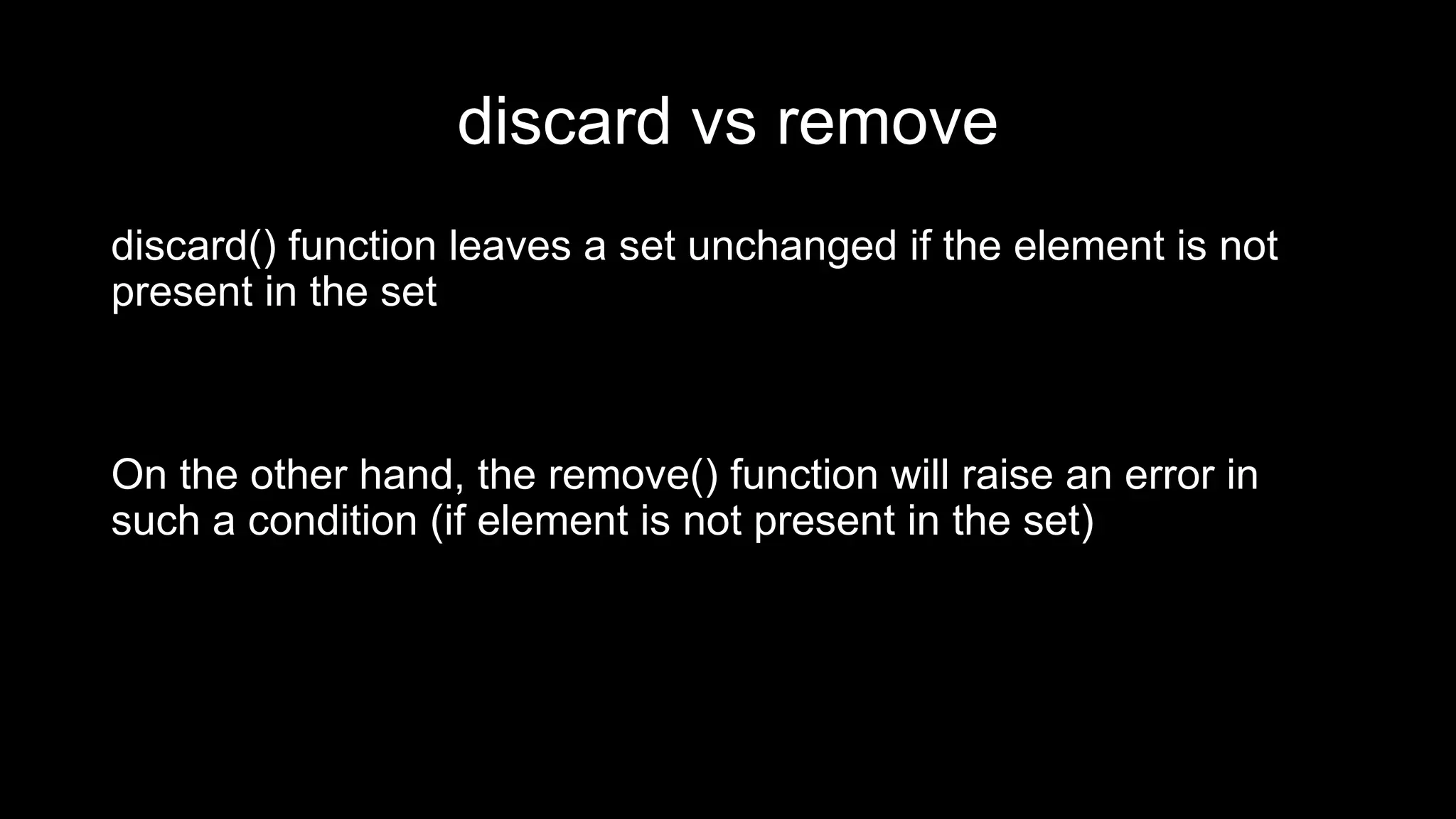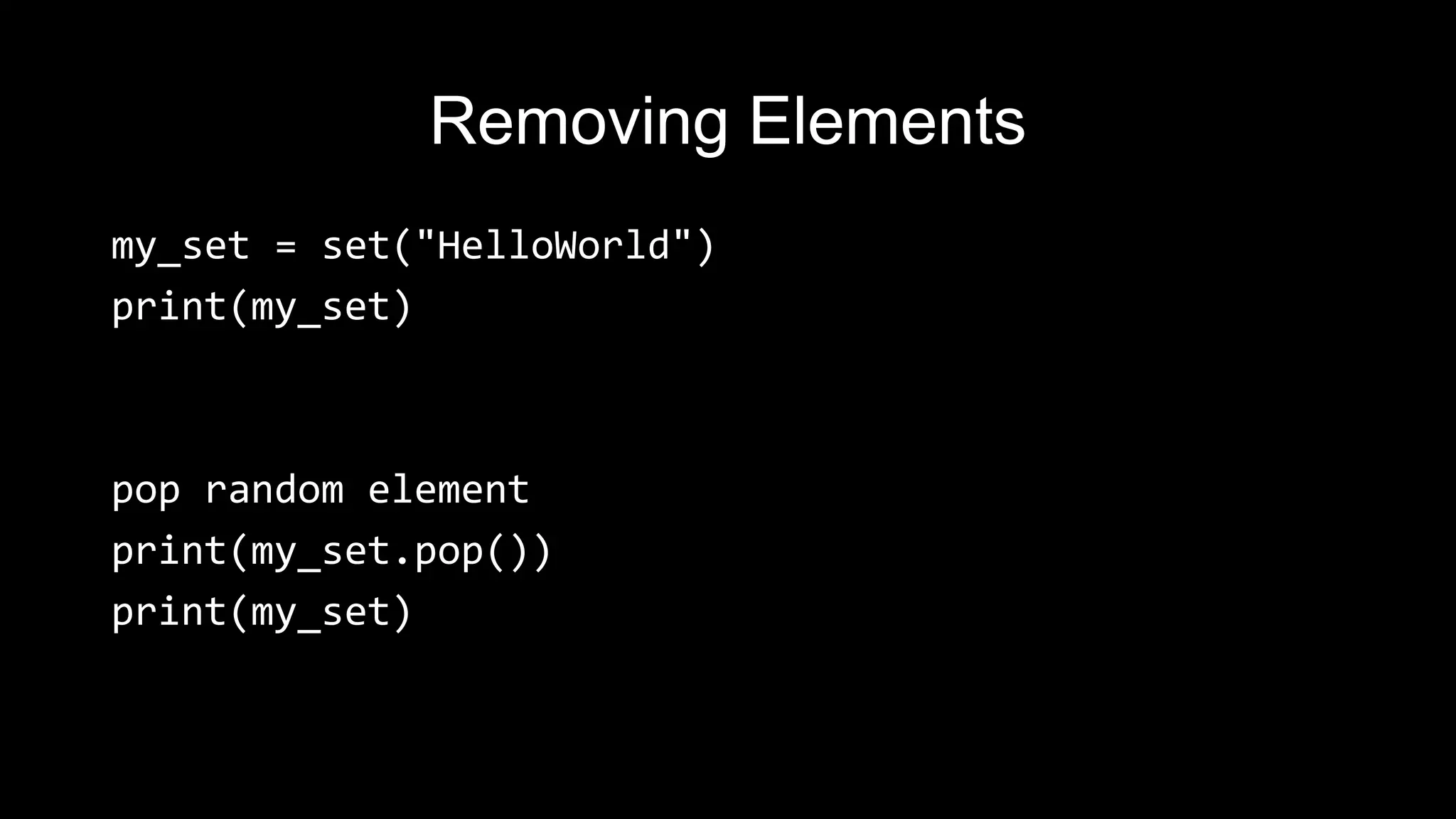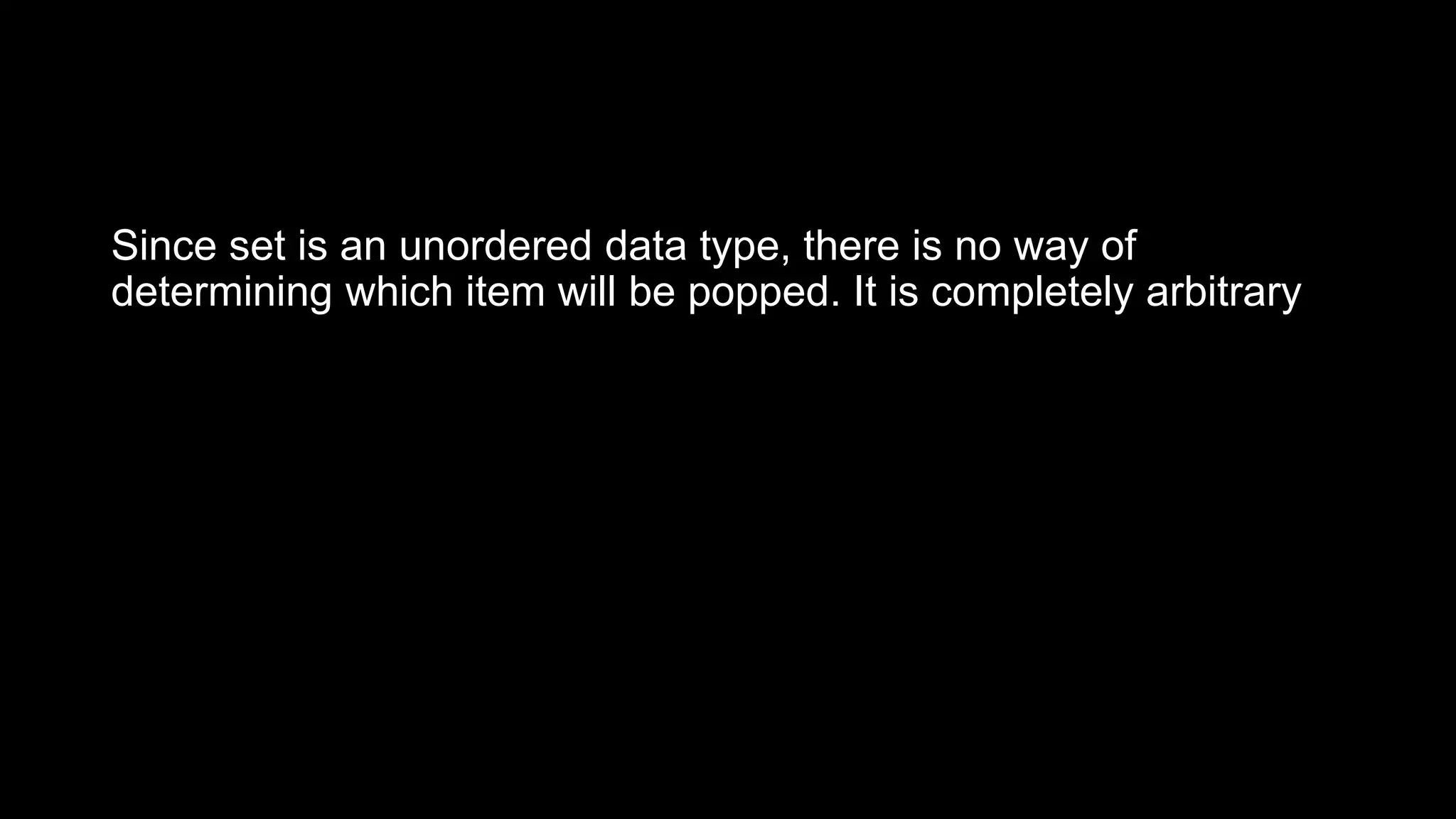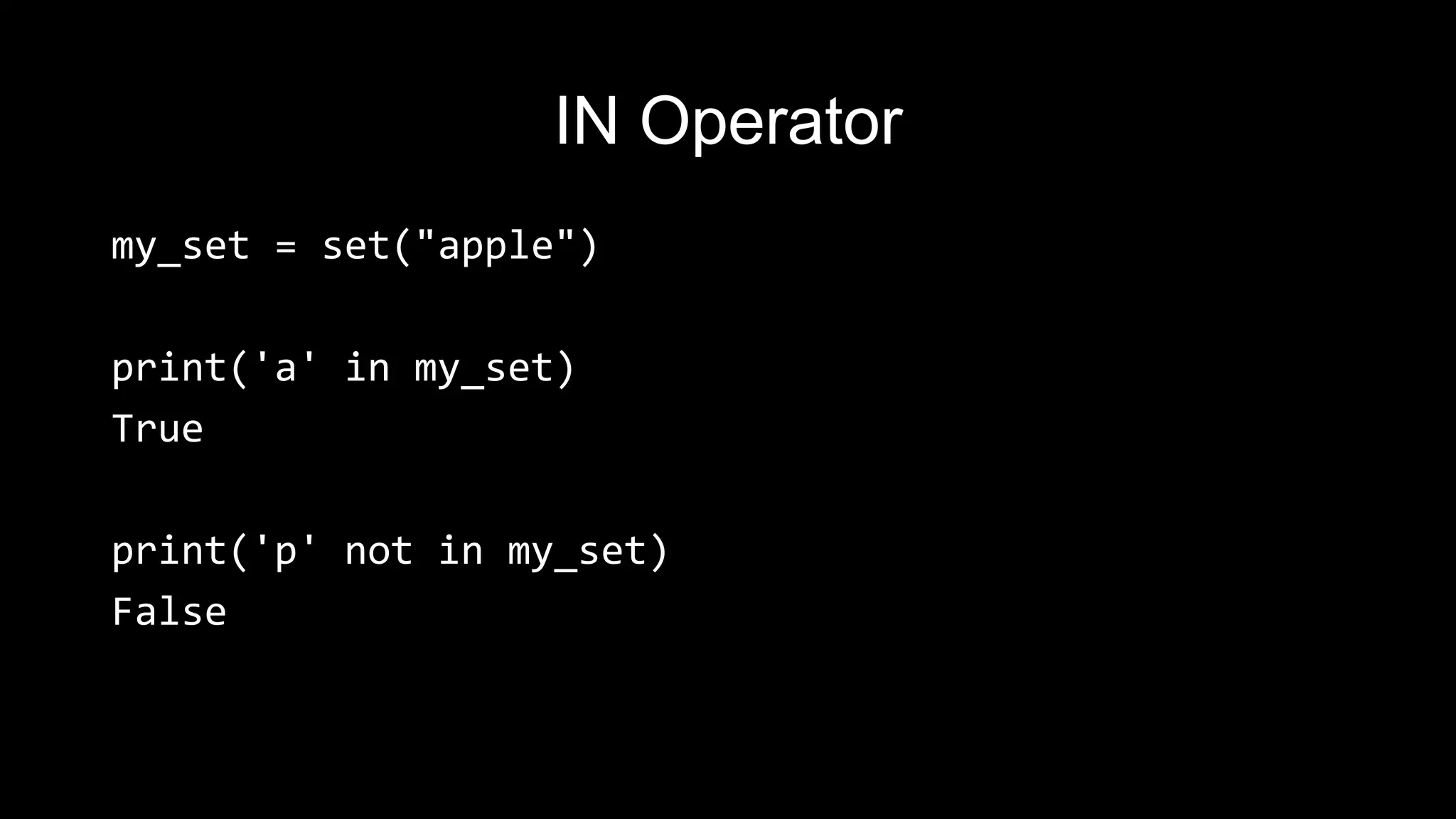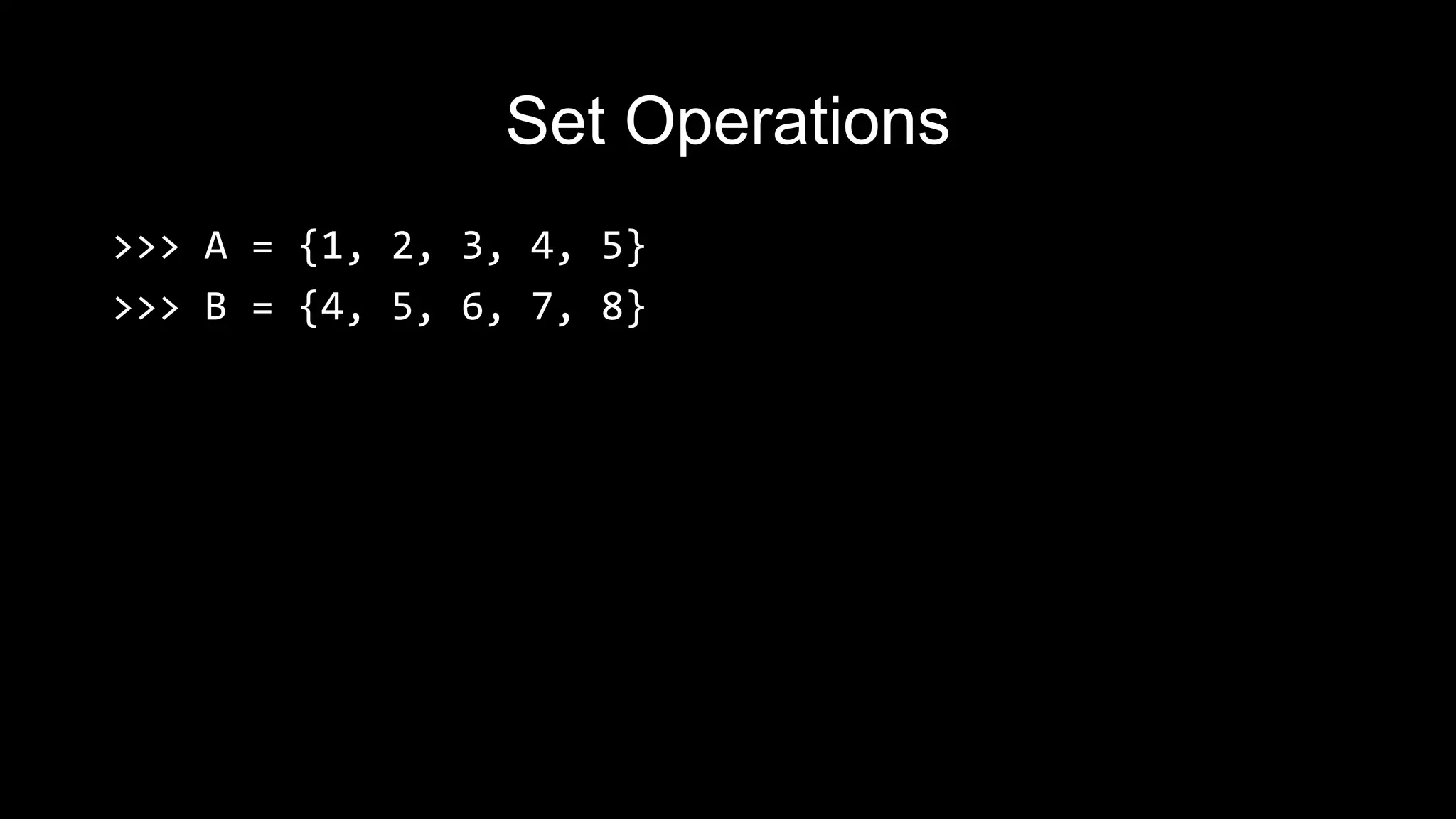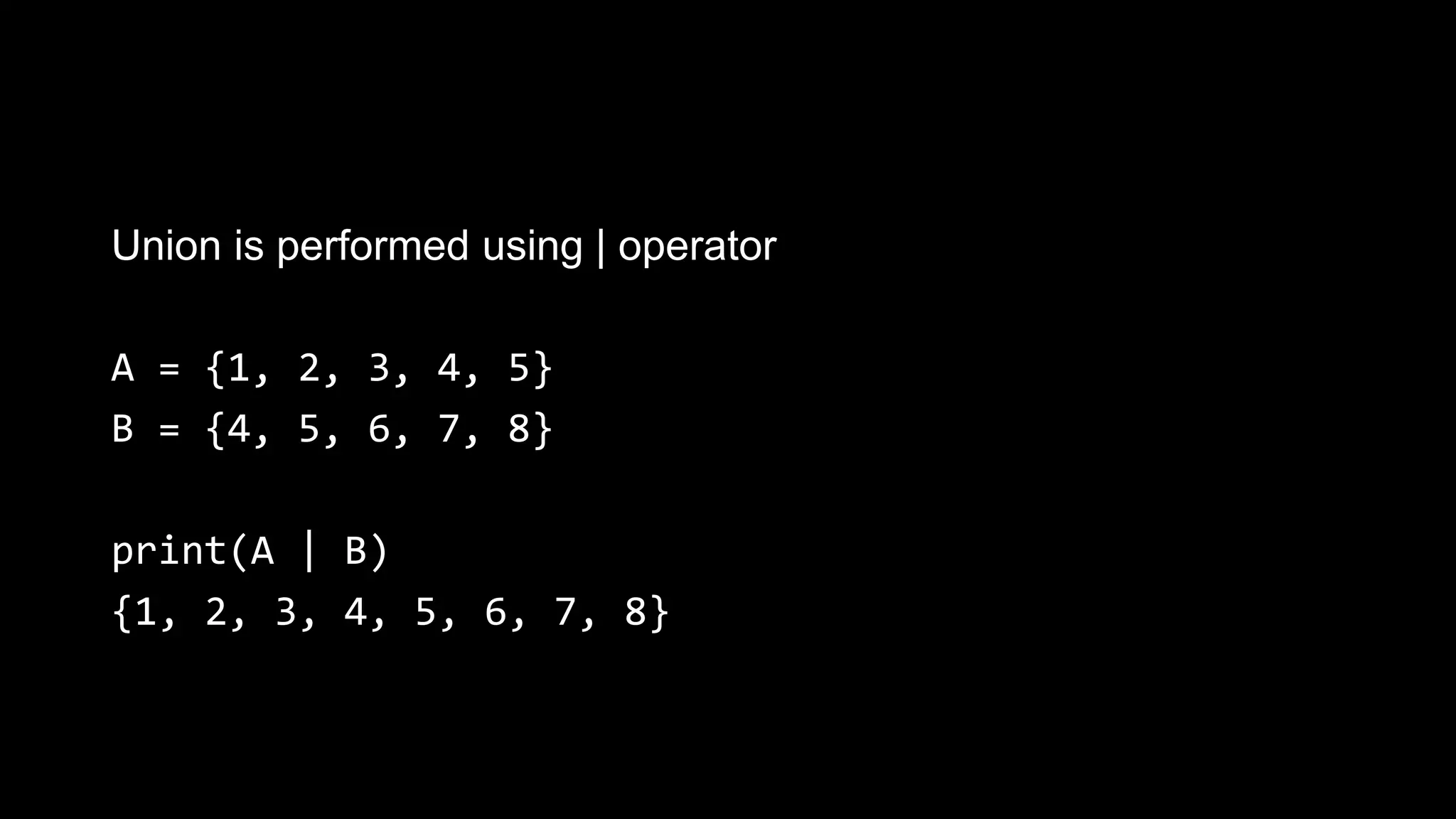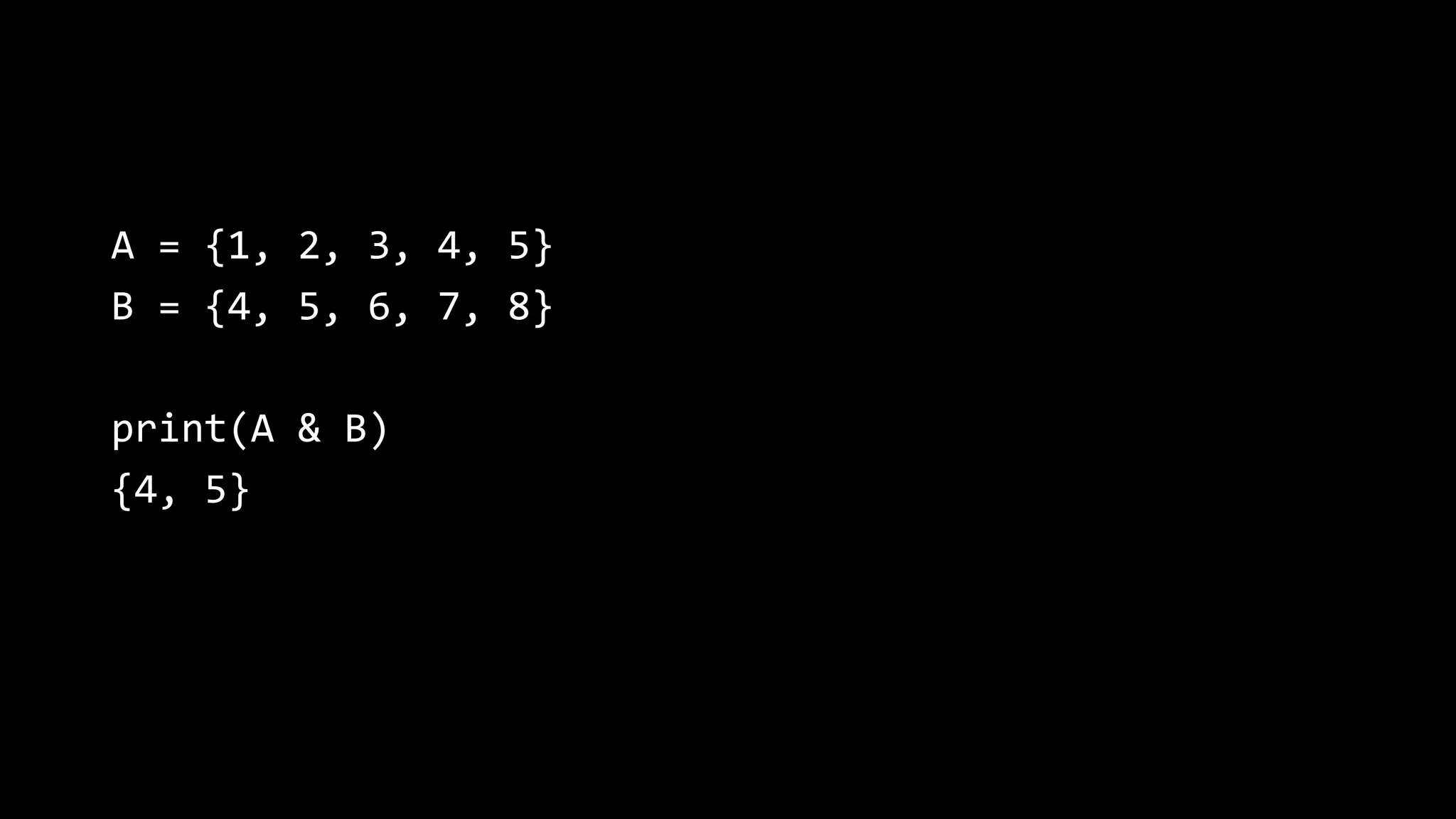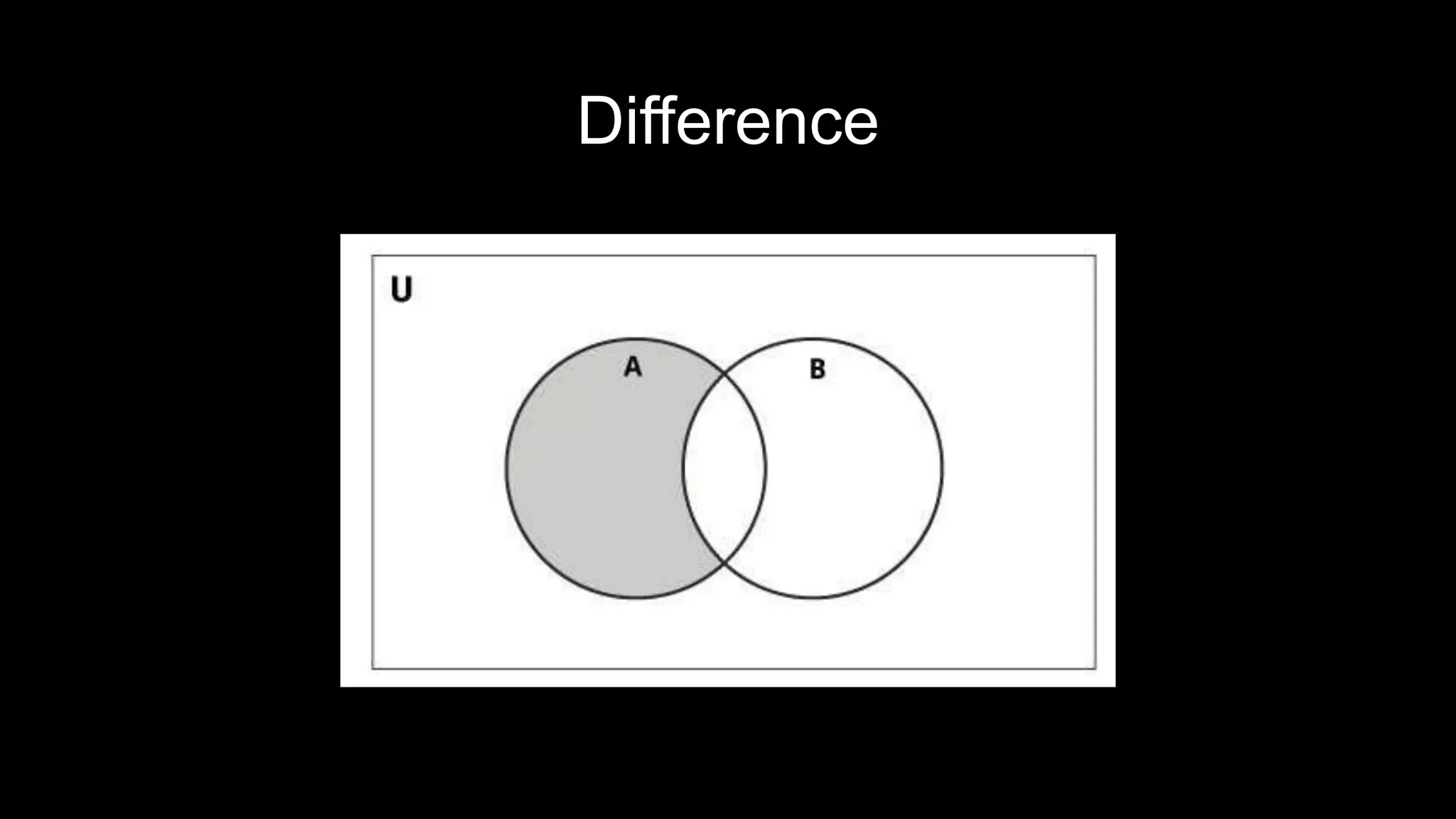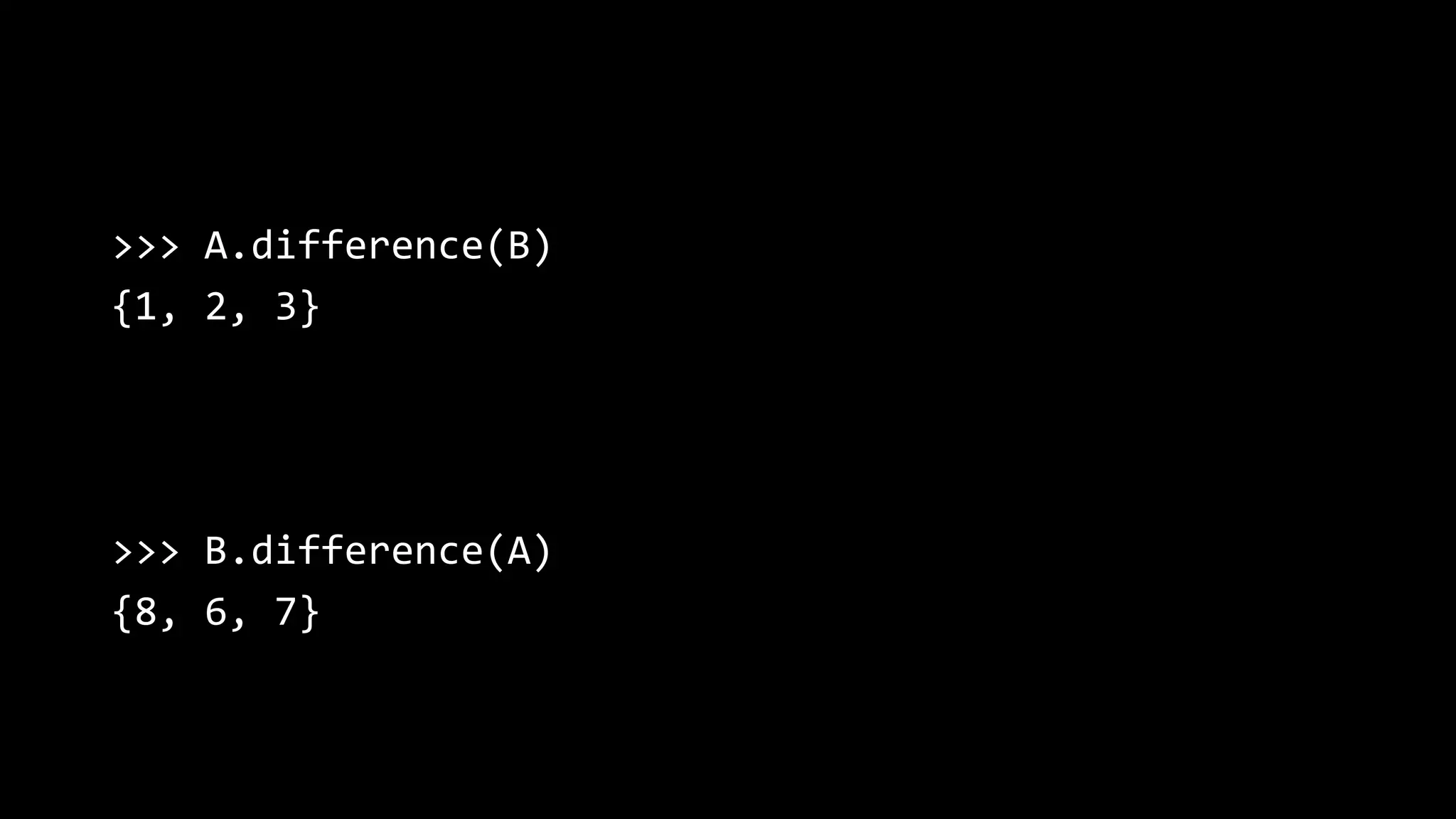This document discusses tuples and sets in Python. It defines tuples as immutable sequences that can contain heterogeneous data types. Tuples can be indexed and sliced but not modified. Sets are unordered collections of unique and immutable elements. Common set operations include union, intersection, difference, and symmetric difference.
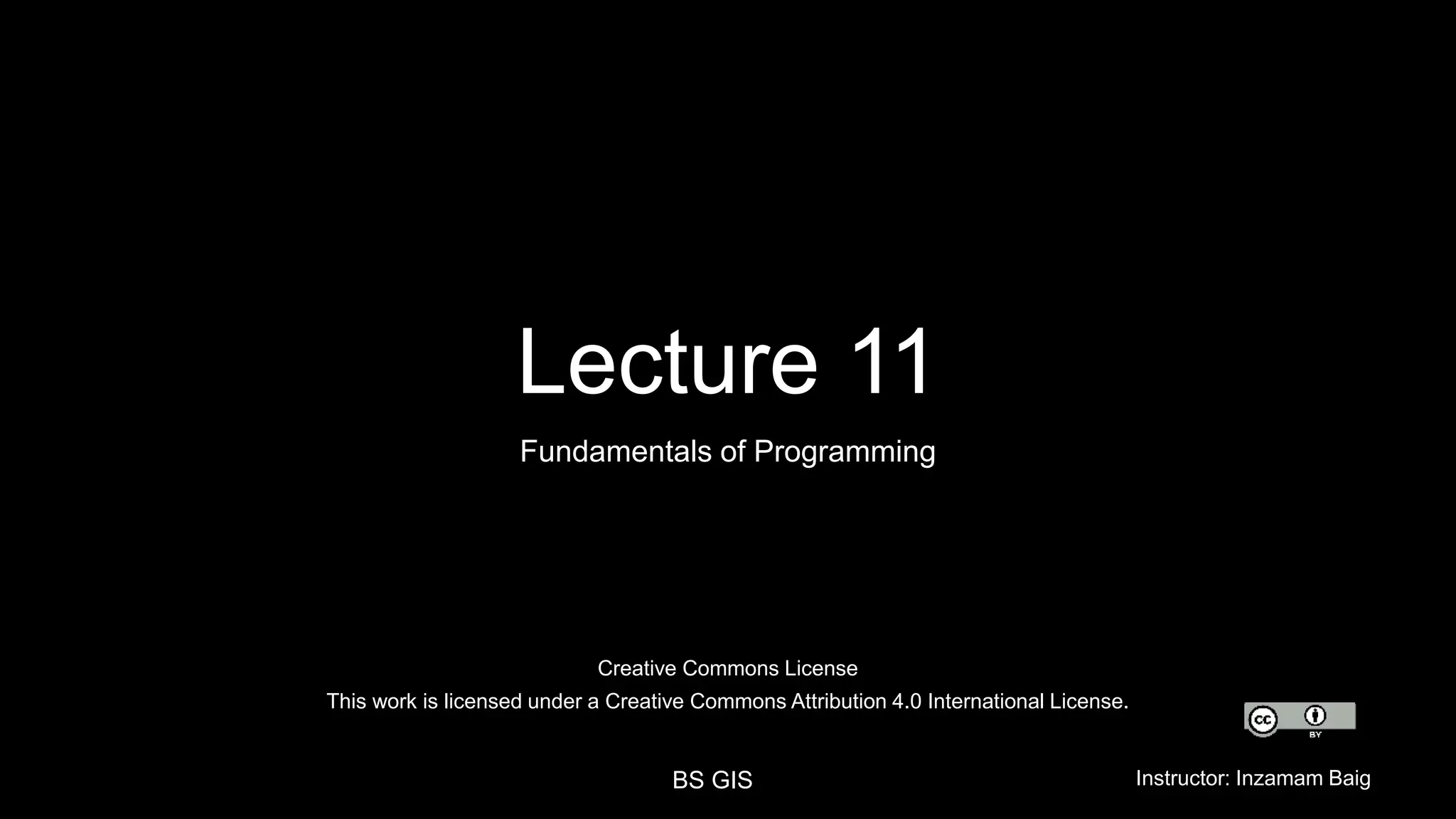
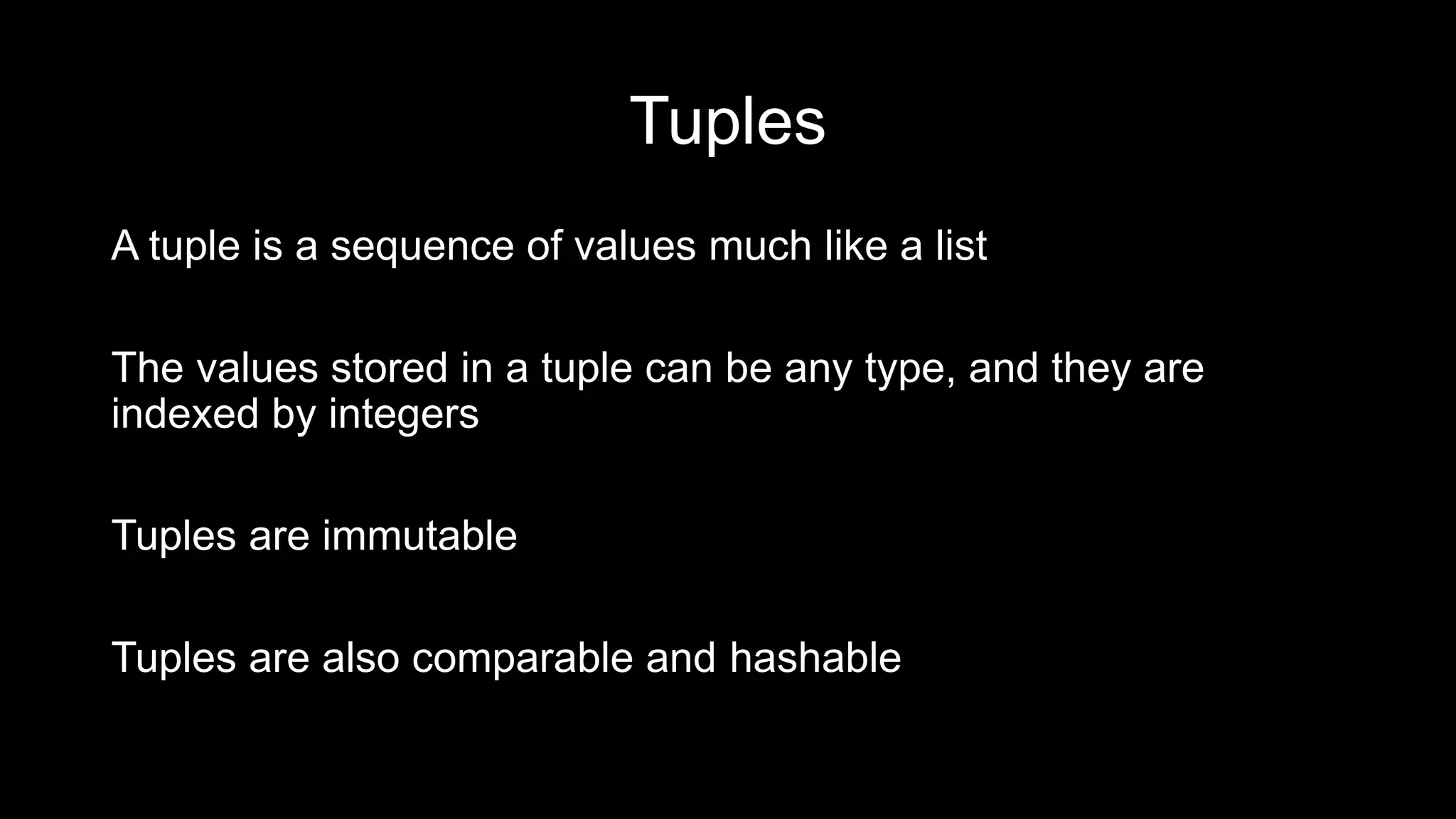



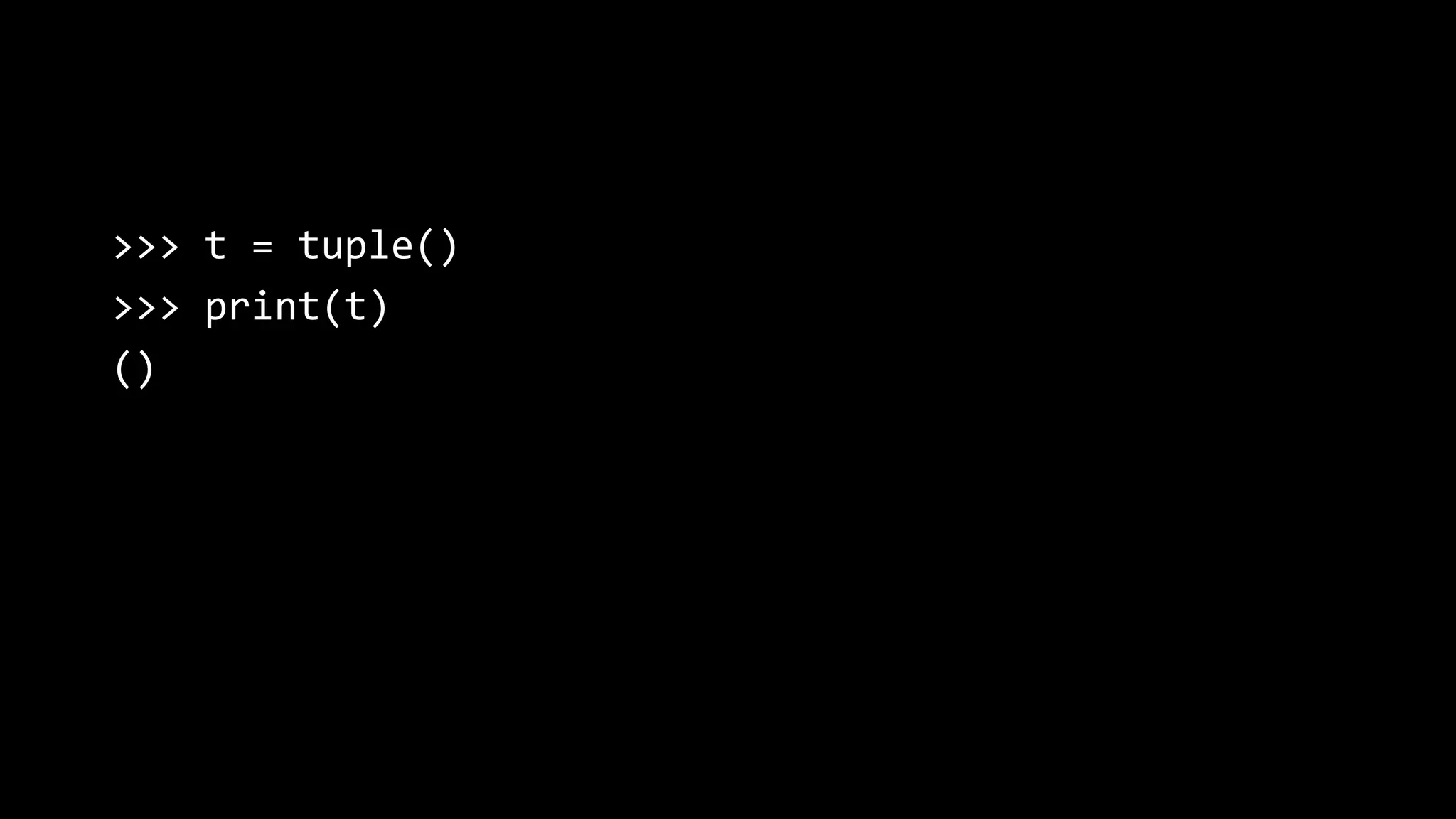

![The bracket operator indexes an element: >>> t = ('a', 'b', 'c', 'd', 'e') >>> print(t[0]) 'a' >>> print(t[1:3]) ('b', 'c')](https://image.slidesharecdn.com/lecture11-201017191136/75/Python-Lecture-11-8-2048.jpg)
![If you try to modify one of the elements of the tuple, you get an error: >>> t[0] = 'A' TypeError: object doesn't support item assignment](https://image.slidesharecdn.com/lecture11-201017191136/75/Python-Lecture-11-9-2048.jpg)
![You can’t modify the elements of a tuple, but you can replace one tuple with another: >>> t = ('A',) + t[1:] >>> print(t) ('A', 'b', 'c', 'd', 'e')](https://image.slidesharecdn.com/lecture11-201017191136/75/Python-Lecture-11-10-2048.jpg)

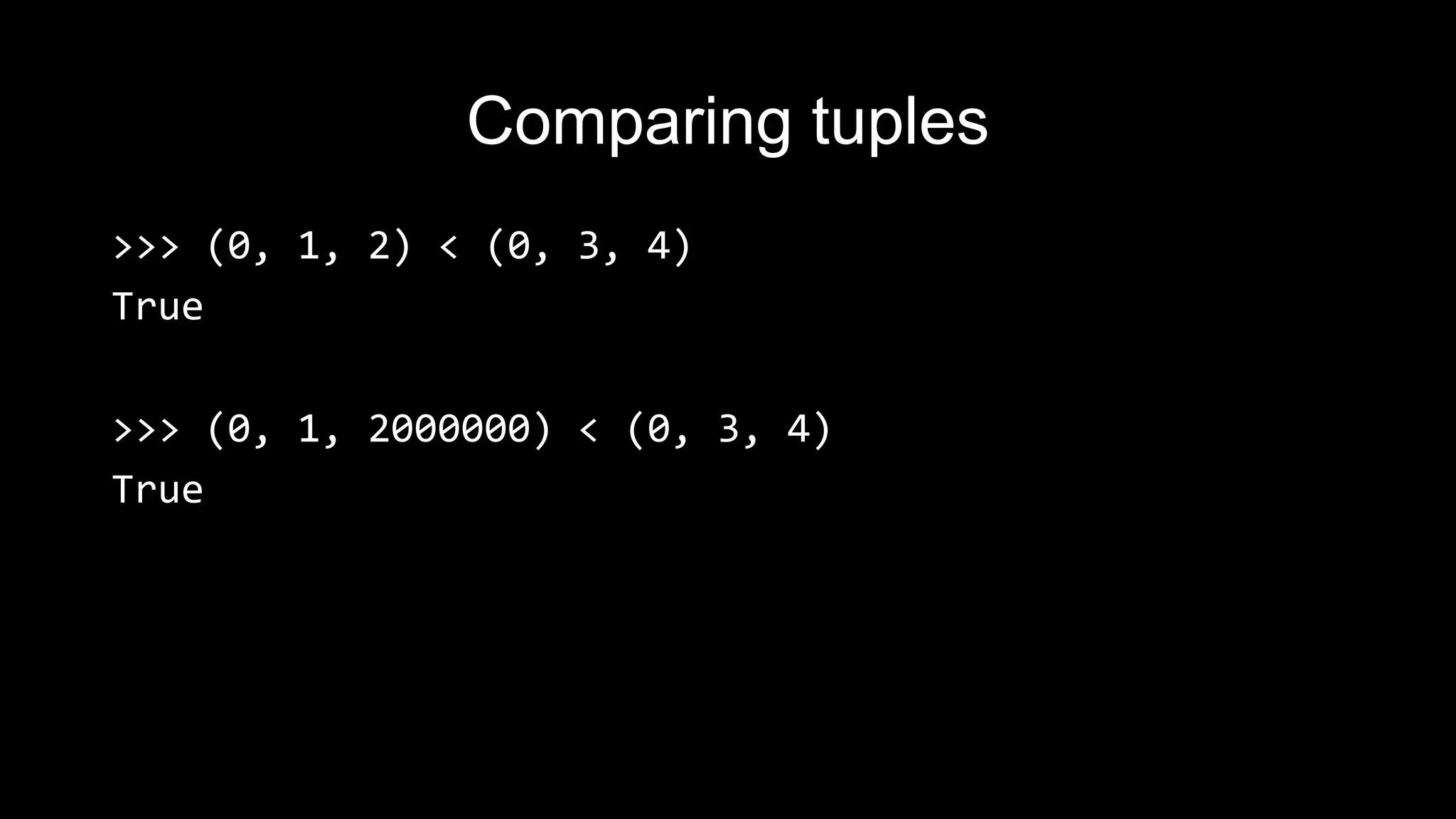
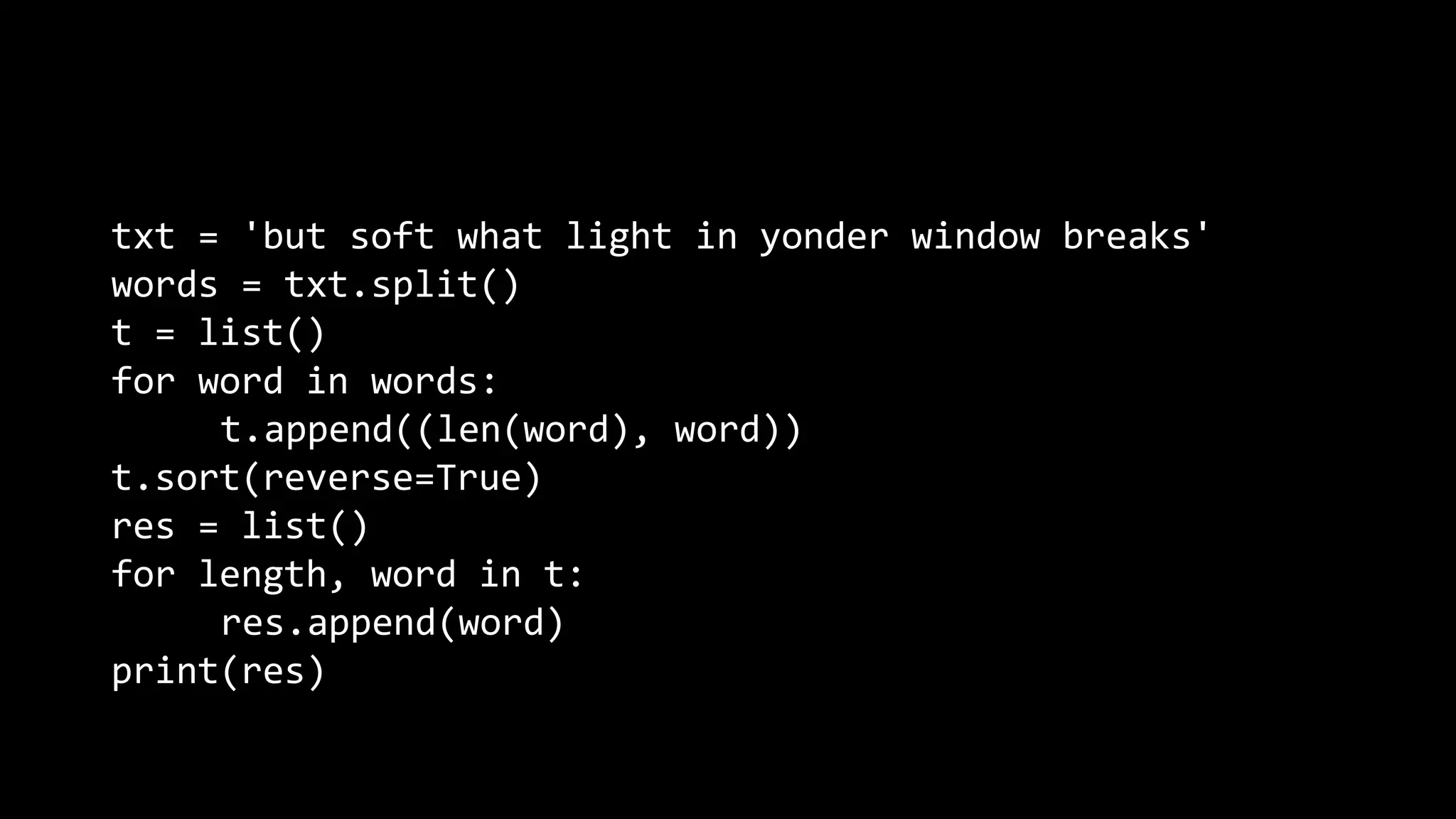
![Tuple assignment >>> m = [ 'have', 'fun' ] >>> x, y = m >>> x 'have' >>> y 'fun' >>>](https://image.slidesharecdn.com/lecture11-201017191136/75/Python-Lecture-11-14-2048.jpg)
![Tuple assignment >>> m = [ 'have', 'fun' ] >>> x = m[0] >>> y = m[1] >>> x 'have' >>> y 'fun'](https://image.slidesharecdn.com/lecture11-201017191136/75/Python-Lecture-11-15-2048.jpg)
![Tuple assignment >>> m = [ 'have', 'fun' ] >>> (x, y) = m >>> x 'have' >>> y 'fun'](https://image.slidesharecdn.com/lecture11-201017191136/75/Python-Lecture-11-16-2048.jpg)
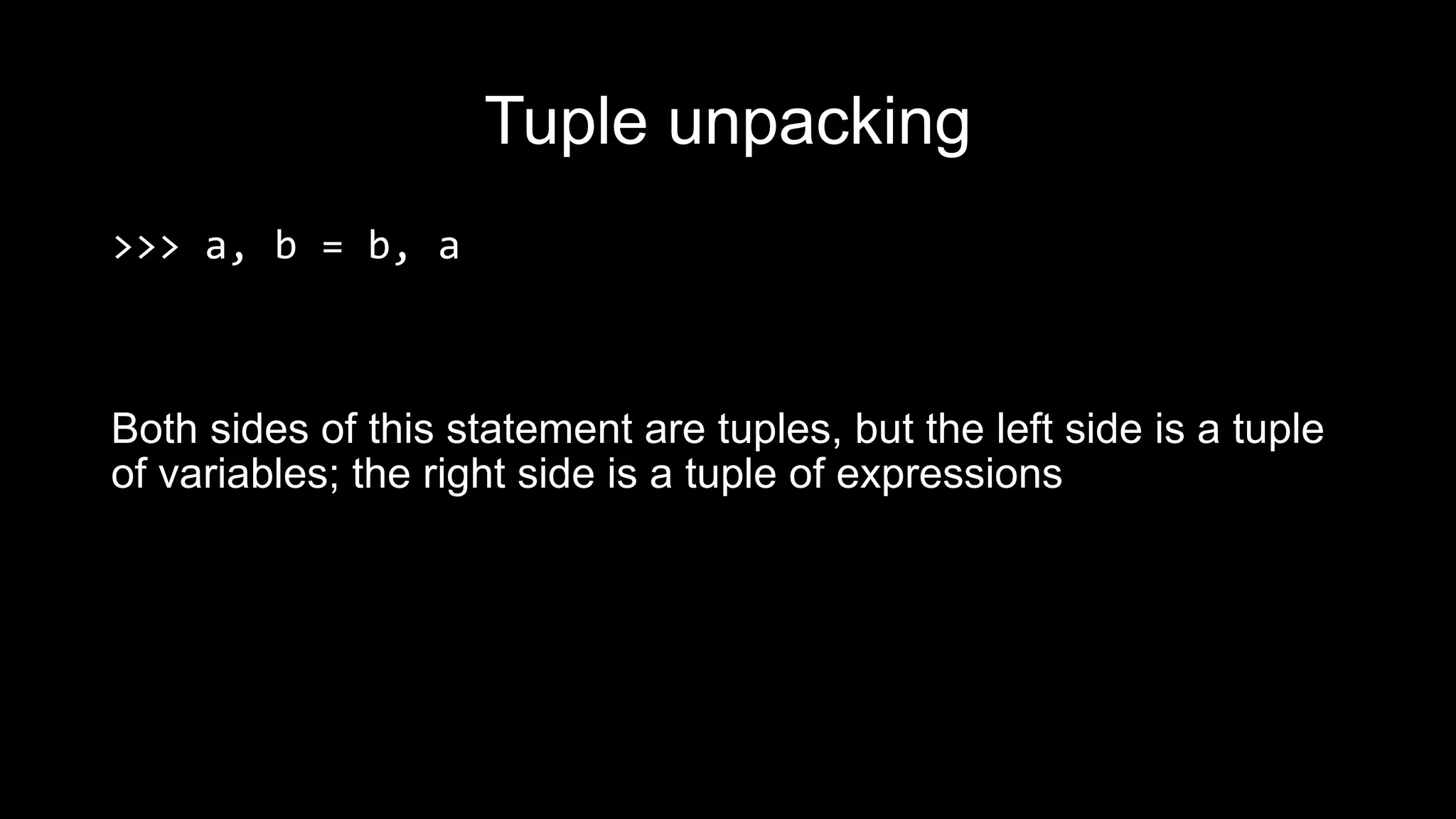

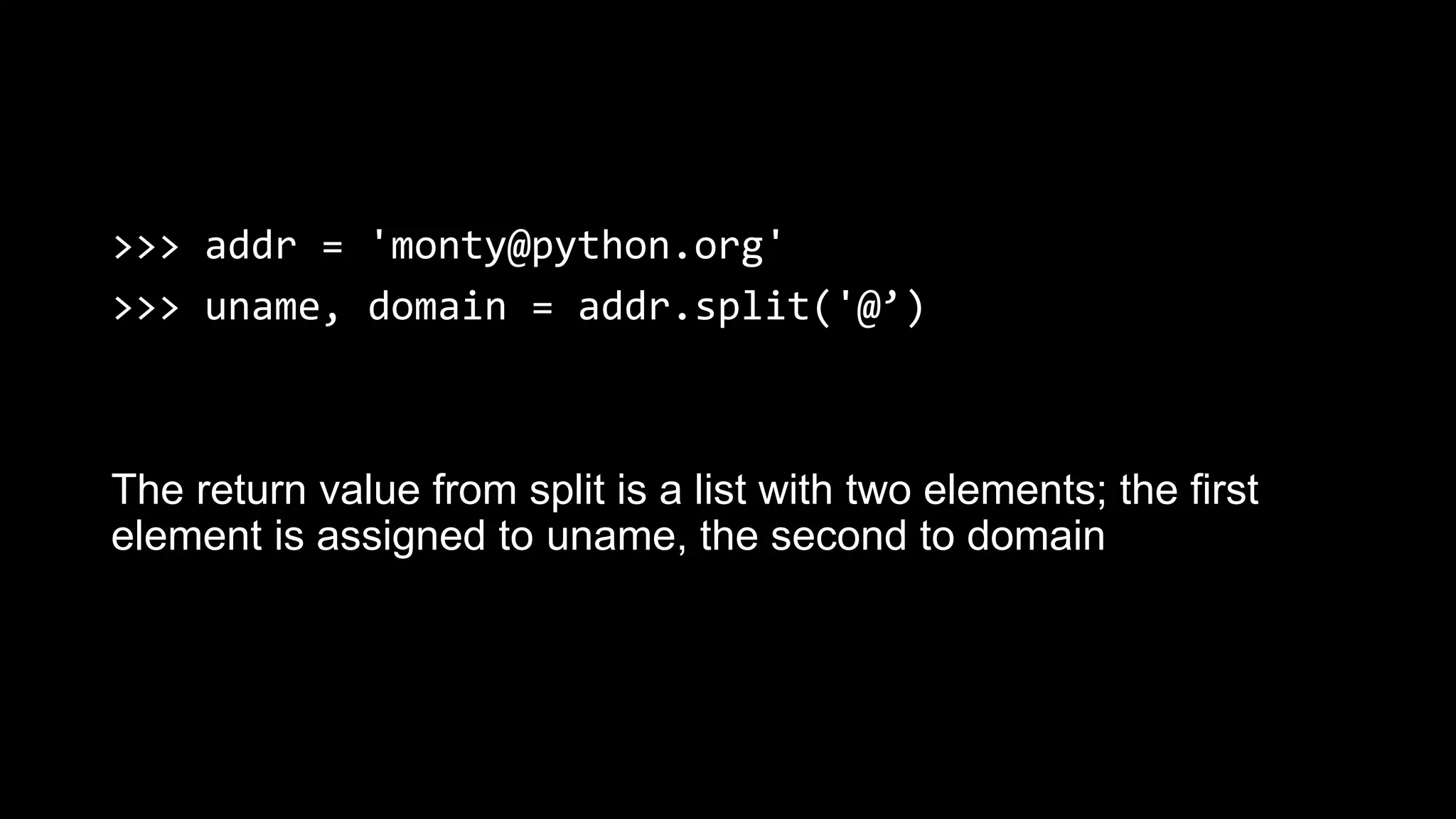
![DICTIONARIES AND TUPLES Dictionaries have a method called items that returns a list of tuples, where each tuple is a key-value pair >>> d = {'a':10, 'b':1, 'c':22} >>> t = list(d.items()) >>> print(t) [('b', 1), ('a', 10), ('c', 22)] the items are in no particular order](https://image.slidesharecdn.com/lecture11-201017191136/75/Python-Lecture-11-20-2048.jpg)
![Converting a dictionary to a list of tuples is a way for us to output the contents of a dictionary sorted by key >>> d = {'a':10, 'b':1, 'c':22} >>> t = list(d.items()) >>> t [('b', 1), ('a', 10), ('c', 22)] >>> t.sort() >>> t [('a', 10), ('b', 1), ('c', 22)]](https://image.slidesharecdn.com/lecture11-201017191136/75/Python-Lecture-11-21-2048.jpg)
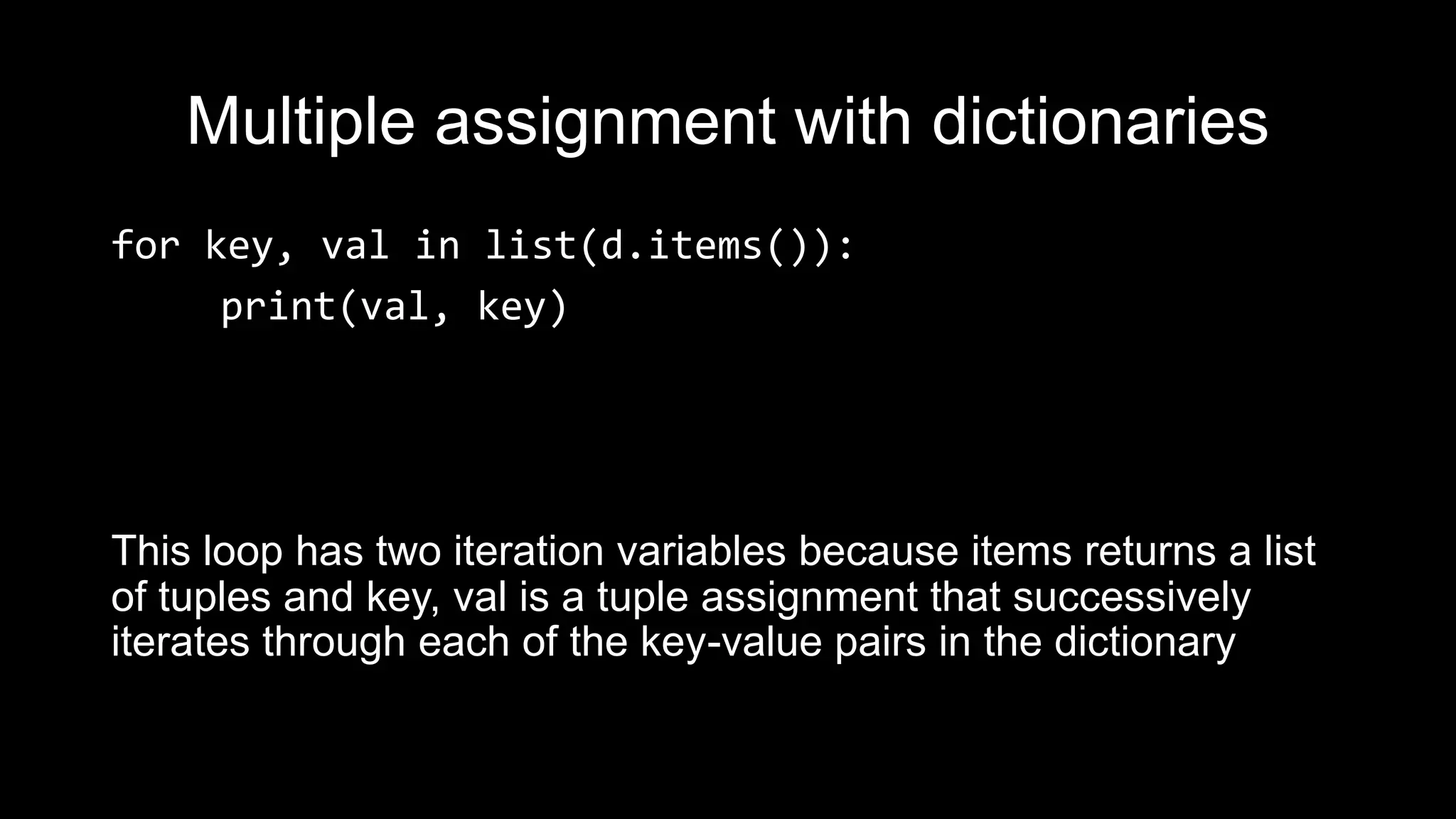
![>>> d = {'a':10, 'b':1, 'c':22} >>> l = list() >>> for key, val in d.items() : ... l.append( (val, key) ) ... >>> l [(10, 'a'), (22, 'c'), (1, 'b')] >>> l.sort(reverse=True) >>> l [(22, 'c'), (10, 'a'), (1, 'b')]](https://image.slidesharecdn.com/lecture11-201017191136/75/Python-Lecture-11-23-2048.jpg)
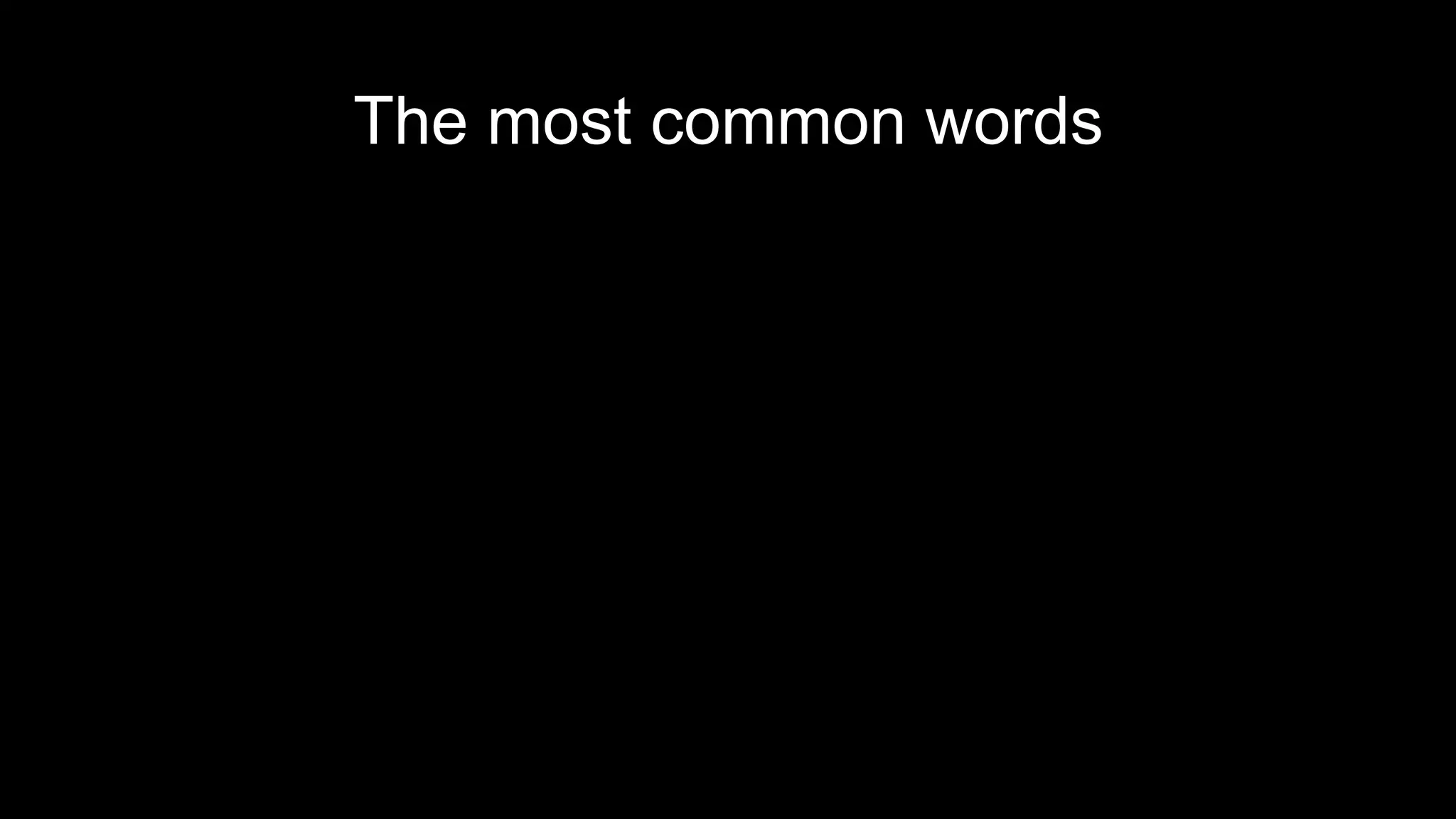
![import string fhand = open('romeo-full.txt') counts = dict() for line in fhand: line = line.translate(str.maketrans('', '', string.punctuation)) line = line.lower() words = line.split() for word in words: if word not in counts: counts[word] = 1 else: counts[word] += 1 lst = list() for key, val in list(counts.items()): lst.append((val, key)) lst.sort(reverse=True) for key, val in lst[:10]: print(key, val)](https://image.slidesharecdn.com/lecture11-201017191136/75/Python-Lecture-11-25-2048.jpg)
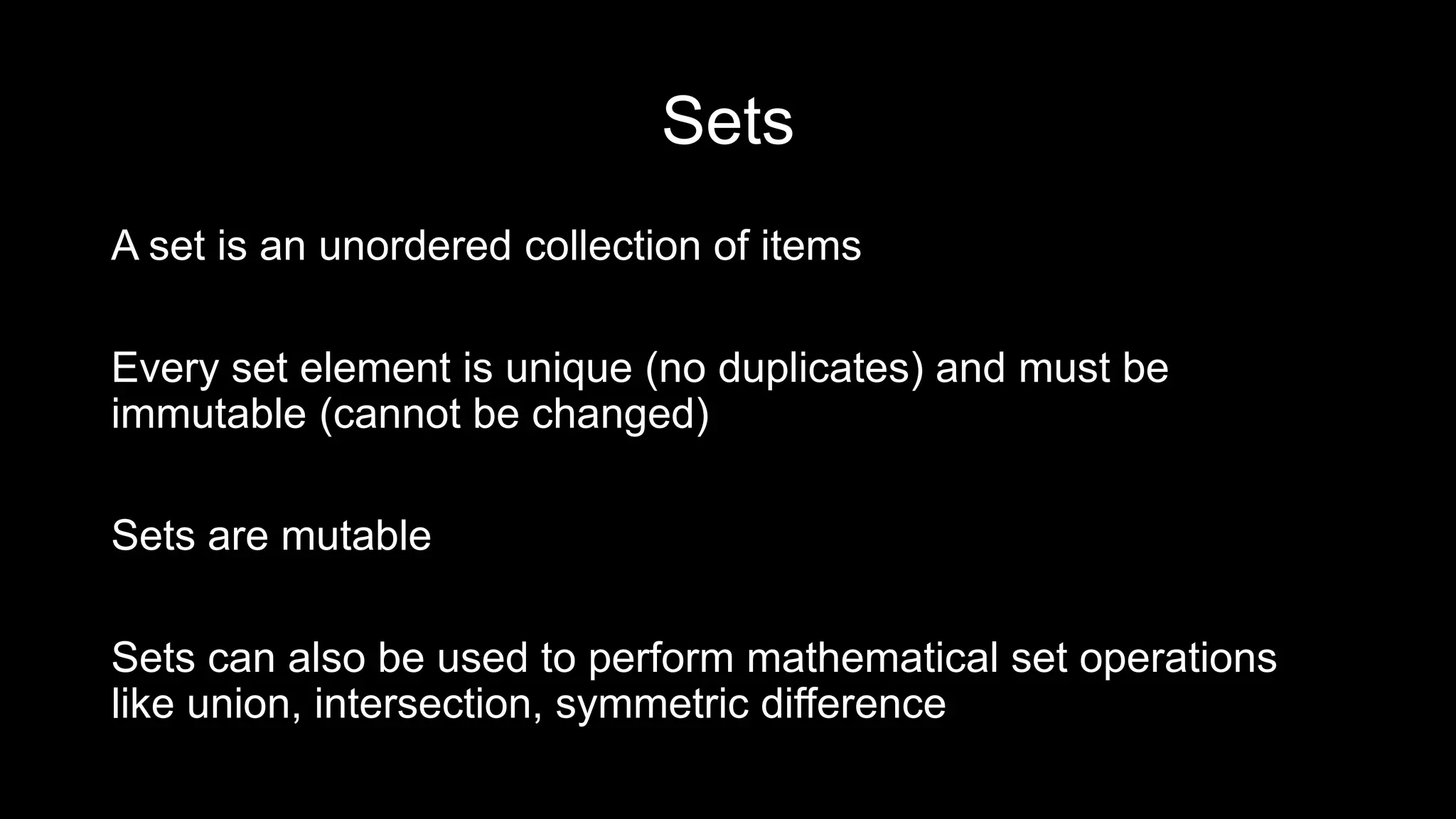

![Duplicate Values set cannot have duplicates my_set = {1, 2, 3, 4, 3, 2} print(my_set) {1, 2, 3, 4} my_set = set([1, 2, 3, 2]) print(my_set) {1, 2, 3} set cannot have mutable items my_set = {1, 2, [3, 4]}](https://image.slidesharecdn.com/lecture11-201017191136/75/Python-Lecture-11-28-2048.jpg)
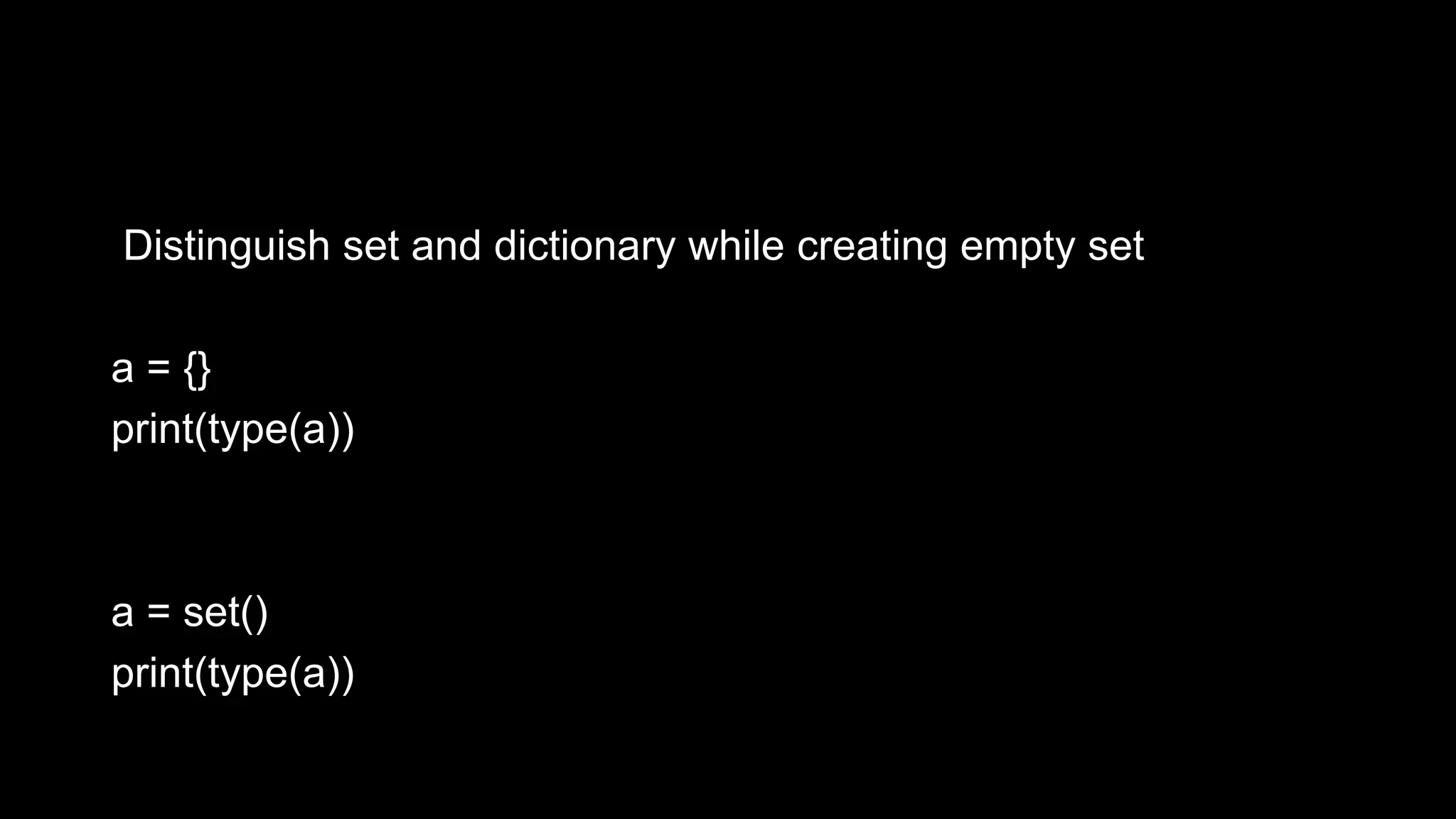
![Sets are unordered therefore indexing has no meaning my_set = {1, 3} my_set[0] TypeError: 'set' object is not subscriptable](https://image.slidesharecdn.com/lecture11-201017191136/75/Python-Lecture-11-30-2048.jpg)
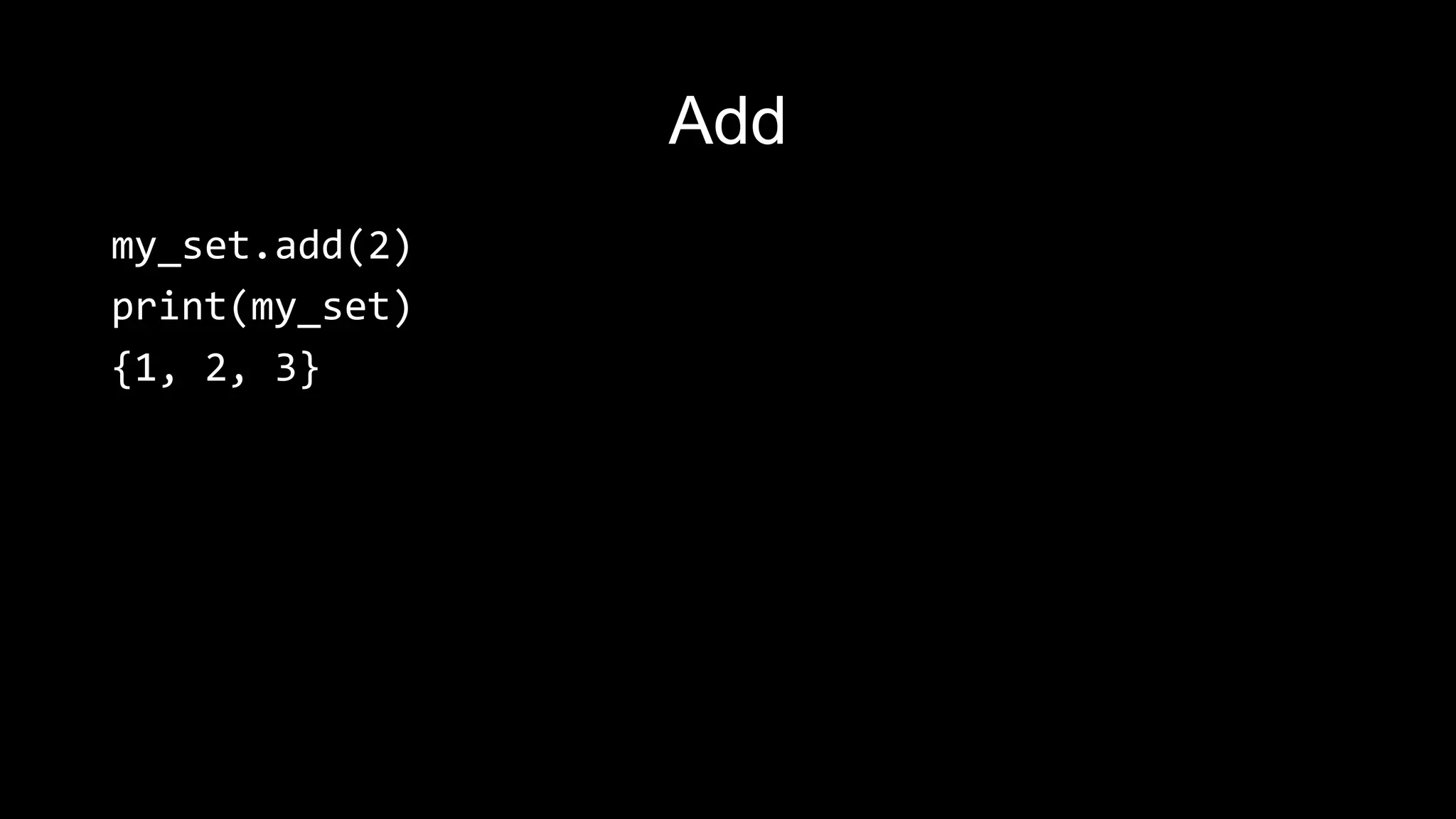
![Update my_set.update([2, 3, 4]) print(my_set) {1, 2, 3, 4} my_set.update([4, 5], {1, 6, 8}) print(my_set) {1, 2, 3, 4, 5, 6, 8}](https://image.slidesharecdn.com/lecture11-201017191136/75/Python-Lecture-11-32-2048.jpg)
